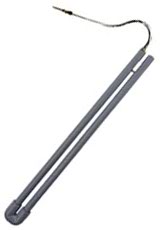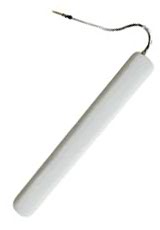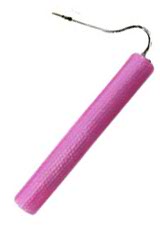The Structure of the Bassoon
[Experiment2]Encasing the Bore in Various Materials
Experiments with sound
It is said that the timbre of the bassoon depends on the thickness of the wood surrounding the bore. Let's listen to the timbres of sound produced by an exposed bore, as well as bored enclosed in different materials.
Experiment procedure
- Make a U-shape out of PVC pipe.
- Cover with gypsum clay so the pipe is completely enclosed.
- Cover the pipe with cushioning material.
- Attach a bocal, blow into it and compare.
Results of the experiment
Exposed PVC pipe

Pipe enclosed in gypsum clay

Pipe enclosed in packaging material

* The correct pitch for recording varies according to the experiment.
Even when only a PVC pipe is used, a loud sound is produced by the reed at the tip of the bocal. Once enclosed in gypsum clay however, the sound you hear gives a completely different impression. It is a little quieter, but the sound also resounds more gently and is more comfortable to listen to. This is because the gypsum clay vibrates and resonates together with the PVC pipe. When the pipe is enclosed in packaging, the sound is strained no matter how hard the pipe is blown, producing only a muffled tone. It is thought that the layers of air within the packaging are absorbing the vibration of the PVC pipe.
The body of a musical instrument also resonates together with the vibrations of the bore. Because the sound is produced through this interaction, a moderately resonant raw material, such as wood, that doesn't prevent the sound from resounding is most suitable. Particularly in the case of the bassoon, a moderately dense maple is most suitable.
Musical Instrument Guide : Bassoon Contents
Structure
- What Kind of Musical Instrument is a Bassoon?
- A Long Tube that can be Separated
- The Bocal and its Various Functions
- Unique Features of the bassoon, and How to Play
- [Experiment1]Comparing the Sound of Tone Holes cut Obliquely and Perpendicular
- [Experiment2]Encasing the Bore in Various Materials
- Bonus Experiment
How to Play
How the Instrument is Made
Choosing an Instrument
Trivia
- An Instrument that is Sensitive to Humidity
- Sounds from water in the U-tube?
- There's a needle in the bocal?!
- Comments by conductors caused popularity to tumble?
- Bassoon classics - Chamber music works
- Bassoon classics - Concertos
- Is the "contra-fagotto" a contrabassoon?
- What is the best tool to file a reed?
